What I have done in this section is to find the period and the absolute magnitude (M) of different Cepheids (505) and I have put it in an excel, where I have been able to obtain a graph and an equation that allows me to calculate the absolute magnitude (M ) of any Cepheid from its period.
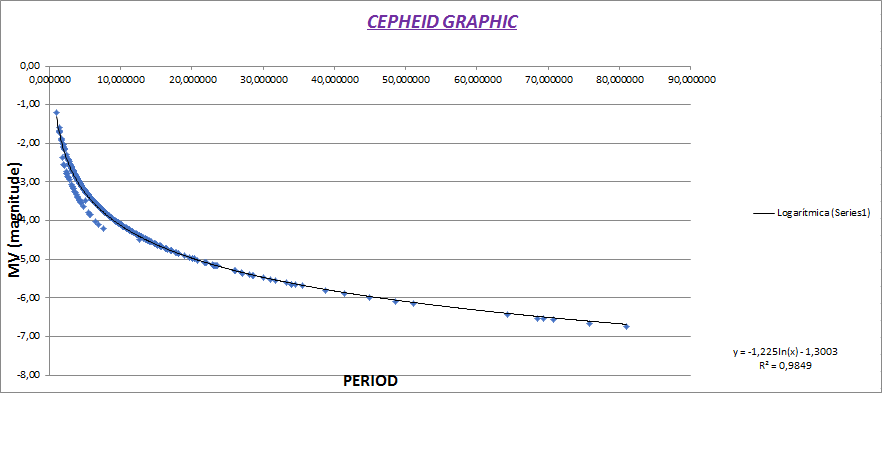
Then, I have calculated the absolute magnitude (M), with the excel equation and with the general formula of the ESO / ESA book, of Épsilon Cephei found in the constellation of Cepheus.
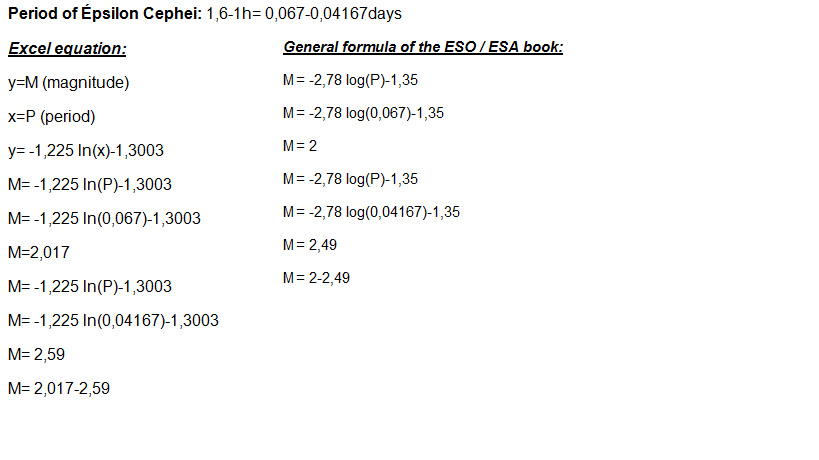
Then, what I have done has been to calculate the distance of this Cepheid with the general formula of the ESO / ESA book
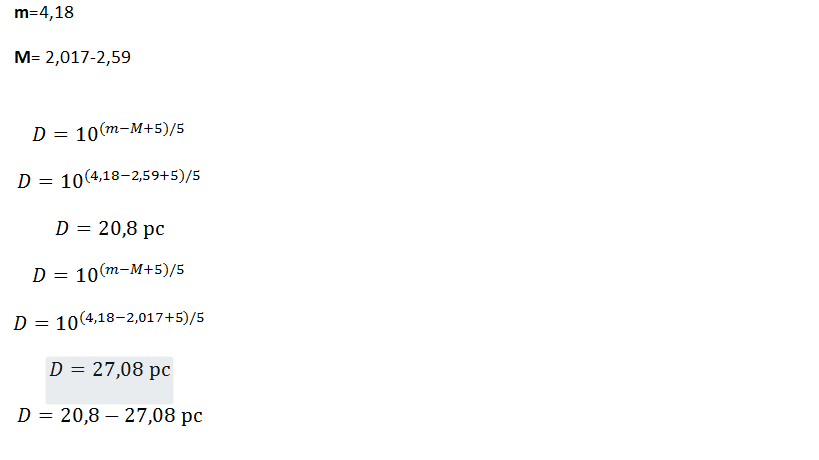
To finish this section, what I have done has been with the rextester program I have copied the magnitude-period of 44 Cepheids to obtain a graph and I have done the same thing again but copying the R-period of the same 44 Cepheids to obtain another graph. In these two sections, I have put the period of my Cepheid so that I can calculate the magnitude and R of my Cepheid.
Results with screenshots:
PERIOD-MAGNITUDE:
_periodo_magnitud.png)
_periodo_magnitud_2.png)
_periodo_magnitud_3.png)
PERIOD-R:
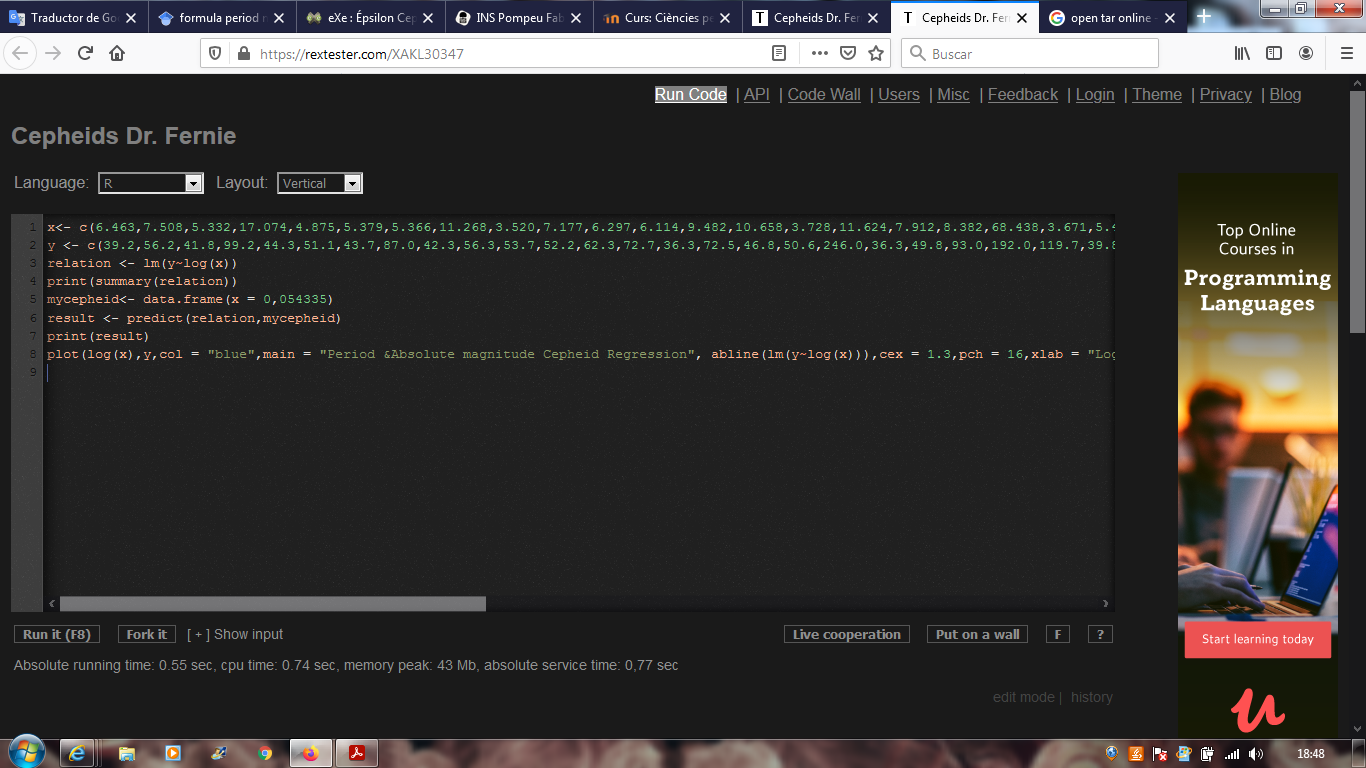
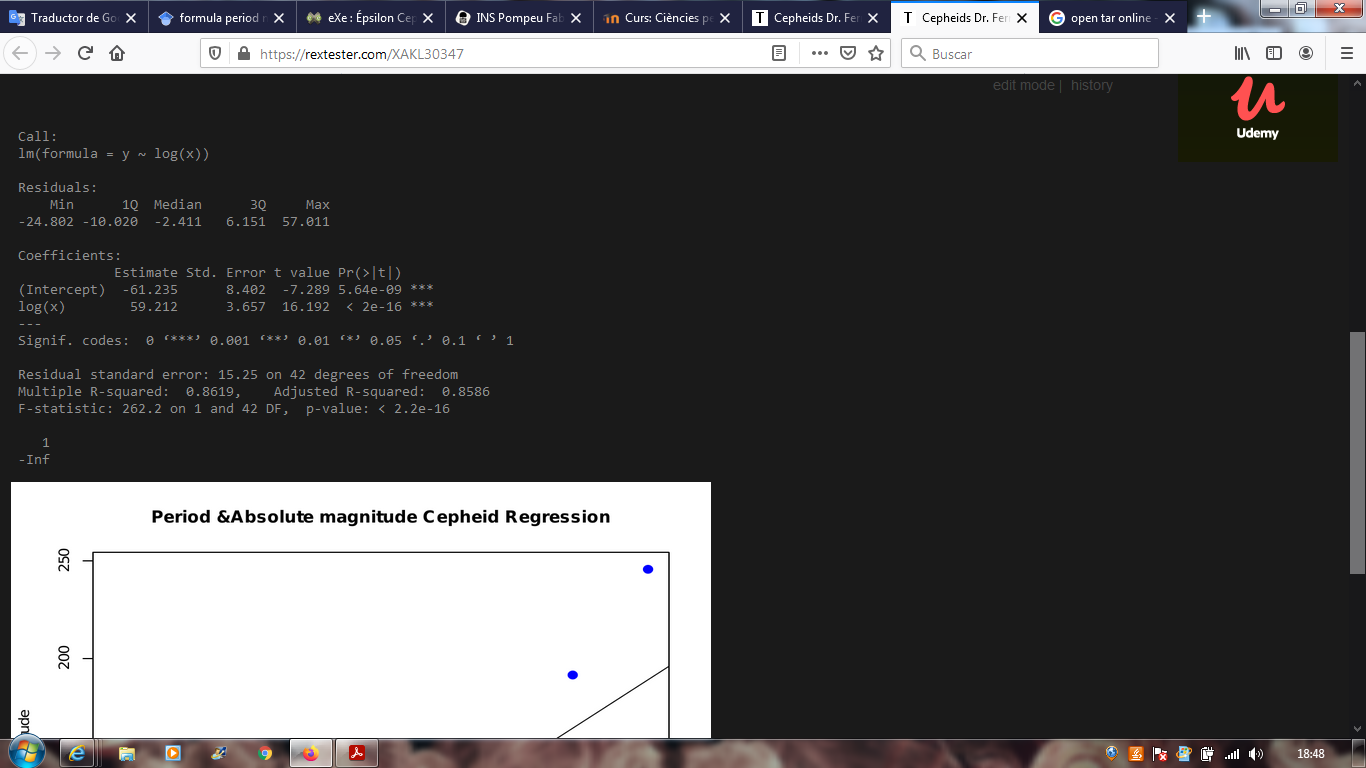
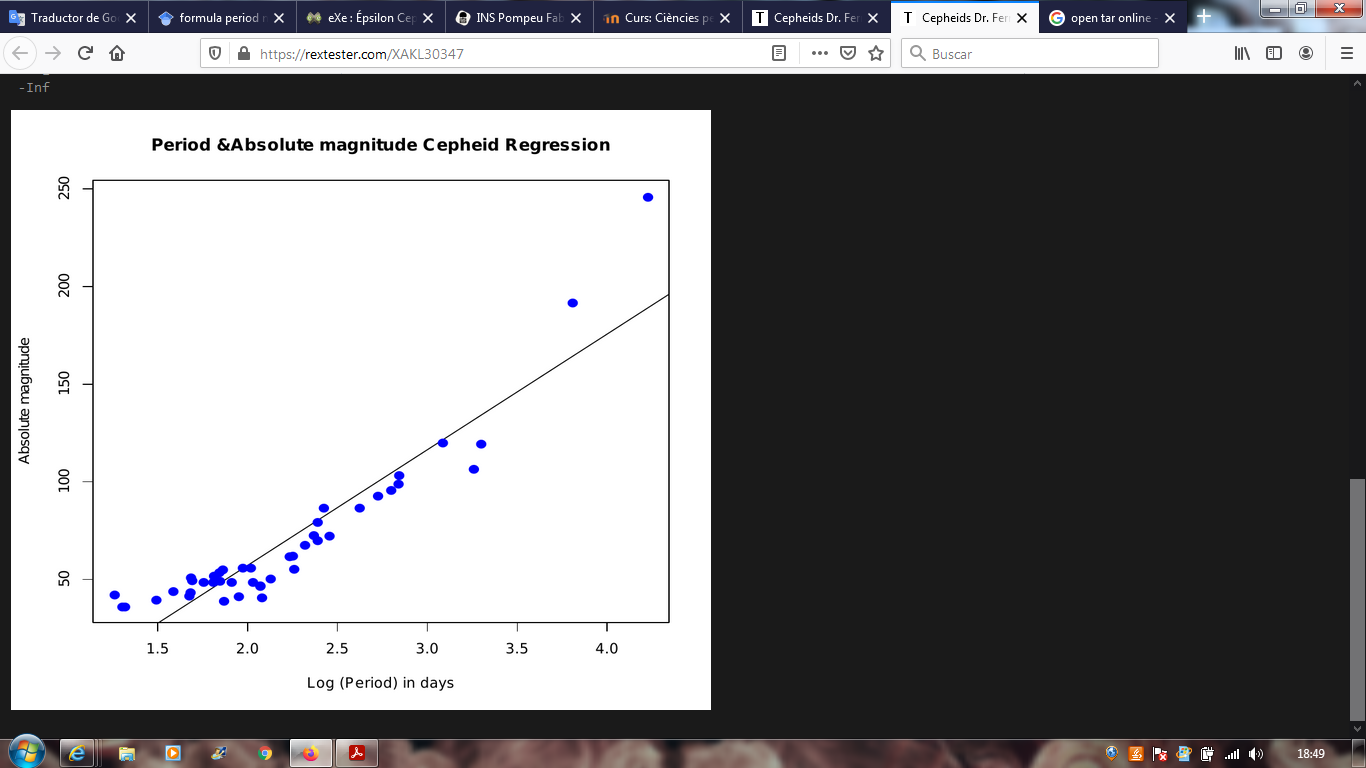
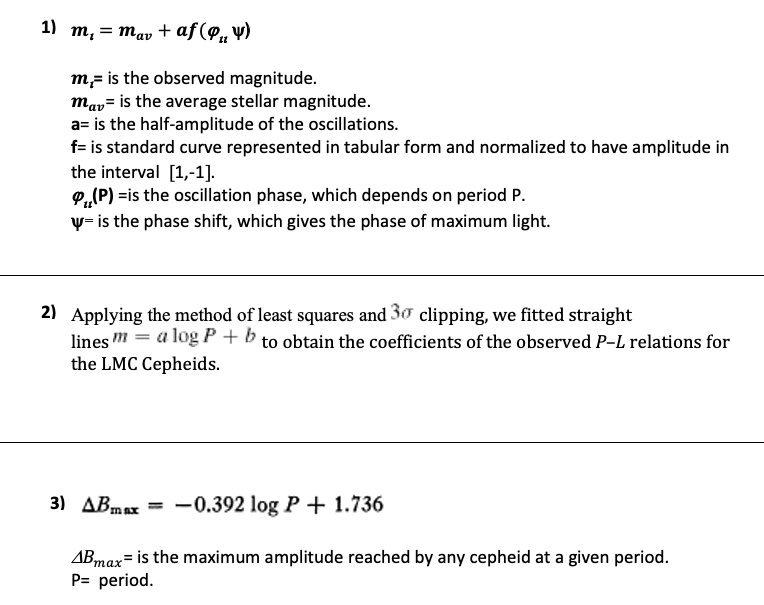 :
: